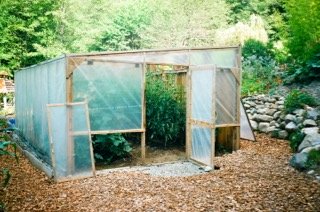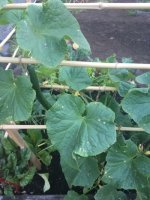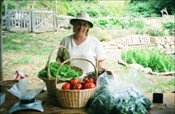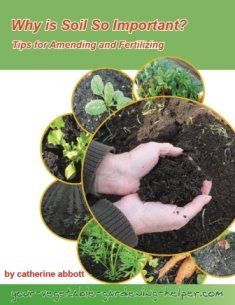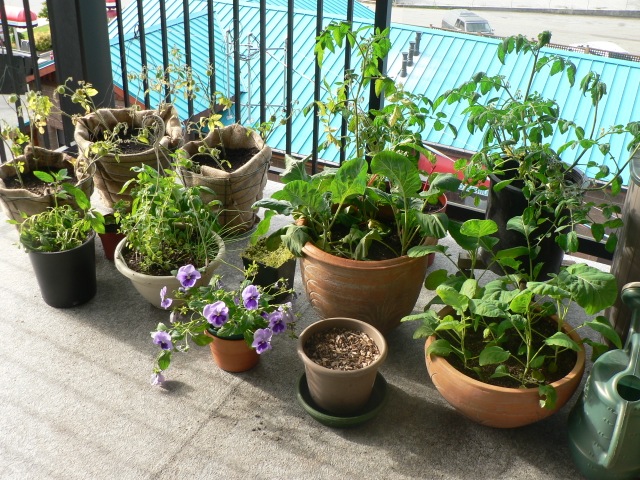Indoor Vegetable Gardening
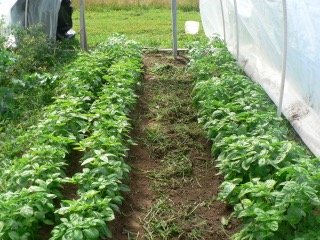 Fabulous basil harvest growing indoors.
Fabulous basil harvest growing indoors.Indoor vegetable gardening is the way I get into my garden earlier as my garden site is wet and slow to warm up in the spring.
If you have a similar type property or if you want to enjoy fresh veggies for most of the year, indoor gardening is the way to go.
Reasons for Indoor Vegetable gardening:
- More control over heat, light and water.
These are all necessary for growing healthy productive vegetables. Some vegetable need more care and attention on theses details than others. You can have more control over cold temperatures by adding in heaters.
If you live in a cloudy climate perhaps artificial light from grow lights is needed to grow during the winter months.
The amount to water in an outdoor garden is often uncontrollable because of the weather. You can always add water to a garden, but taking it away when you get too much rain is impossible. Growing indoors you can totally control the amount of water your veggies are getting.
- Shelters and protects plants.
Some vegetable plants need lots of heat to grow. The area I grow in is quite high in elevation so the nights are cooler even in the summer, so I grow my tomatoes, peppers, eggplants, and cucumbers in walk in tunnels so they get the warmth they need.
If you live in a cold climate and want to grow in the off season your plants will be protected from snow, too much rain and the cold by growing them indoors.
- Pest and disease free plants.
Indoor vegetable gardening can be a way to prevent certain pests or diseases. I have had problems with tomato blight in the past as I live in a wet climate.
After losing a whole crop one year I now only grow them in a walk in tunnel. They now are protected from the rain so no more blight.
Flea beetle is another pest in my garden. I cannot grow any oriental greens unless they are covered. Again the walk in tunnel give the plants the protection they need.
- Extend your growing season.
Often in the off season (in Northern climates this is October to February) it is cool and wet or cold with lots of snow, so how do you grow veggies during this kind of season?
Indoor is definitely an options for you. Learn what vegetables will grow best in your conditions. Here is a list of cool season vegetables to get you started.
- Healthy transplants.
Indoor space is needed to start and grow healthy transplants, especially if you want to start them in the late winter or early spring.
Seedlings need warmth and shelter to get a good start. I often start tomatoes in my kitchen in February and move them to my greenhouse after a month or so. this gives me a head start for selling, or planting my own garden.
Learn more about starting seedlings and the best time to start your favorite veggies.
With indoor gardening it is important to keep things simple.
- Consider why you want to grow indoors?
- How much time do you want to put into it?
- What do you want to grow?
- Consider what conditions are needed for the vegetables you want to grow.
Answering these questions will help you to find the best structure for your needs.
Check out these options:
Please take the time to sign up for my Vegetable Gardening Hints monthly newsletter.
Return from Indoor Vegetable Gardening to Homepage
Recent Articles
-
Vegetable Gardening Frustrations: Lessons for a Better Harvest
Oct 29, 24 07:37 PM
Every vegetable gardener knows that while the rewards are sweet, the vegetable gardening frustrations can be a bit bitter. -
Small Space Vegetable Gardening
Sep 23, 24 05:06 PM
Small Space Vegetable Gardening - Tips for growing vegetables in small spaces. -
Why Fall Gardening?
Aug 16, 24 12:24 PM
Fall Gardening: A guide to a Bountiful Harvest.
